
Tux arrives at the North Pole, making the spread of embedded Linux truly global. And, more cool toys for your entertainment needs.
Is embedded Linux a success? Judging from the steady stream of new devices coming to fruition, it certainly is. In this month's column, we learn of an incursion by Tux into the arctic region of the globe—perhaps a search for Santa? Then we take a brief look at a handful of other cool gadgets that run on embedded Linux.
Thanks to a project of the US National Oceanic and Atmospheric Administration (NOAA), a webcam has been installed for the first time at the North Pole—one that runs on embedded Linux, no less. The device was installed on April 28, 2002 and is logging four images a day—take a look at NOAA's web site: www.arctic.noaa.gov/gallery_np.html.

Figure 1. North Pole NetCam
The webcam's images will track the North Pole snow cover, weather conditions and the status of NOAA's Pacific Marine Environmental Laboratory's North Pole instrumentation, according to James Overland, head of NOAA's North Pole Project.
Although the webcam is capable of transmitting camera video at the rate of one image per second, NOAA keeps the device powered off most of the time in order to conserve its solar-charged battery power. Four times a day the webcam wakes up, places a phone call via the Iridium low Earth orbit satellite system and transfers the latest images at 2,400 baud to NOAA's servers using PPP.
The webcam being used is the NetCam from StarDot Technologies, a 20-person company located in Buena Park, California. StarDot created their first webcam design in 1996, developed a custom digital camera control chip in 1997 and went on to sell over 65,000 webcams based on that design (manufactured by a Taiwanese partner and imported to the US by StarDot).
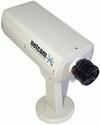
Figure 2. StarDot Technologies NetCam
The NetCam's embedded computer, which runs µClinux (www.uclinux.org), is based on a 54MHz Motorola ColdFire microprocessor equipped with 8MB of RAM memory and 2MB of nonvolatile Flash memory. I/O ports include a pair of RS-232 serial ports, a 10Mbps Ethernet port, an I2C serial bus and four bits of digital I/O. The device implements a web server function based on Boa (www.boa.org), which allows it to be accessed remotely from a web browser anywhere in the world, provided it's connected to the Internet via either Ethernet, modem or wireless. (See www.stardot-tech.com.)
snom 100 VoIP Phone: The snom VoIP phone supports a wide range of open telephony standards including SIP, H.323/H.450 and Asterisk, along with data protocols like HTTP, TAPI and LDAP. The company says the snom 100's IP-based voice quality is indistinguishable from that of “normal” ISDN phones and, in addition, the 128 × 64 pixel graphical LCD display and web-browser interface make calling, remote management and configuration even easier. In addition to its IP functionality, the device also provides typical telephone features like call hold, call waiting, call forward/transfer, call divert, caller line identification, and so on. Inside the snom 100, there's a 50MHz Motorola MPC855T PowerQUICC Integrated Communications processor equipped with 16MB of RAM. The system's embedded OS, based on a Linux 2.4.18 kernel, was developed in-house, and snom created their own drivers and libraries for the use of the 128 × 64 pixel graphical LCD and even wrote their own embedded HTTP server. (See www.snomag.de/snom100_en.htm.)
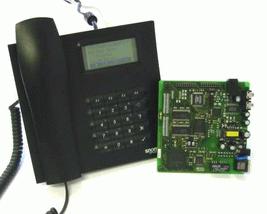
Figure 3. snom Phone
hippo Internet Phone: The hippo Internet Phone looks a lot like an ordinary desktop telephone, but it can make calls over either Ethernet LAN or normal telephone lines (via PPP, through the user's local ISP). Instead of being carried as analog signals over normal phone lines, the calls are carried digitally over the Internet. At the other end, the calls can be received by either another Internet Phone (PC-based or dedicated Internet Phones) or by a standard PSTN (Public Switched Telephone Network) telephone anywhere in the world, including cell phones. Obviously, substantial reductions in phone bills are possible using this approach because no long-distance phone service is necessary. The hippo Internet Phone has a 4 × 20 character LCD screen, a 12-button telephone keypad, six function keys and a telephone handset with hook/switch, ringer and normal-sounding dial and call progress tones that simulate “normal” telephone operation. Inside hippo's Internet Phone is an embedded computer based on a 48MHz Motorola MPC850/823 PowerPC system-on-chip processor that is equipped with 16MB of DRAM and also runs an embedded Linux OS derived from MontaVista's Hard Hat Linux. (See www.hippoinc.com.)
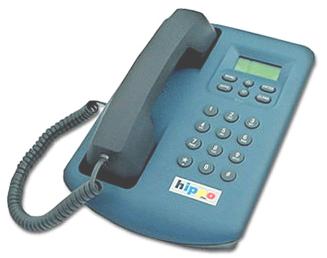
Figure 4. hippo Internet Phone
SONICblue Rio Central: This high-fidelity home stereo component that stores up to 650 CDs' worth of music on its built-in 40GB hard drive is said to be “as simple to use as a CD player, but as smart as a PC”--a Linux-based PC, that is. The system is intended to function as a standalone audio system, making it easy to store your music (“you load your CDs, the device does the rest”) and create an essentially unlimited number of customized playlists. Thereafter, a large display, intuitive interface and advanced search features are meant to make it easy to find the music you want instantly. Plus, the system optionally offers suggestions based on your tracked listening habits. Inside, there's a 206MHz Intel StrongARM processor along with 16MB of system RAM, running an embedded Linux OS derived by the system's developers from Debian/ARM sources. In addition to its standalone operation, the Rio Central can also be used as the basis of a broader Rio experience, serving one or more companion Rio Receiver thin clients (which also run embedded Linux) via HomePNA (phone line networking) or Ethernet. It also can download files to Rio portable MP3 players via USB. The device is broadband-ready (via an external USB-to-Ethernet adapter), includes a built-in 56Kbit/sec modem (for users without broadband access) and provides a 10Mbps HomePNA connection. (See www.sonicblue.com.)
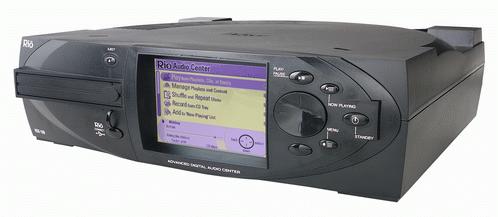
Figure 5. SONICblue Rio Central
Cyclades Device Server: The Cyclades TS100 is a powerful yet highly compact device server used to connect various serial devices to a TCP/IP network. Typical applications include industrial automation and control, out-of-band network management, retail automation and connecting various types of serially interfaced devices to networks. The device provides interface ports for both 10/100Mb Ethernet and RS-232/RS-485 serial lines, allowing it to integrate legacy instruments and systems having serial interfaces to broadband networks using TCP/IP. Unlike its competitors, which are typically based on proprietary software models, the TS100's built-in embedded Linux OS and other open-source software make it easy to customize operation of the TS100. Although not much larger than a deck of playing cards (2.8" × 3.4" × 1.2"), the TS100 contains not just one but two microprocessors. This is possible thanks to the use of Motorola's MPC855T “PowerQUICC Integrated Communications Processor”. The MPC855T is a dual-core system-on-chip processor that includes a PowerPC core processor (running at 50MHz) plus a separate RISC engine specifically designed to off-load communication tasks. Memory resources consist of 16MB of SDRAM, plus a 4MB Flash disk from which the firmware is uncompressed and loaded into a RAM disk at boot time. The device's embedded Linux OS is based on a 2.2.14 kernel, along with a variety of open-source utilities including the GoAhead web server (for web-based setup and management of the device), Portslave, OpenSSH 3.1, crontab, BusyBox, net-tools, rsyncm and others. Cylades started from MontaVista's Hard Hat Linux 1.2 and added their own in-house customization. (See www.cyclades.com.)
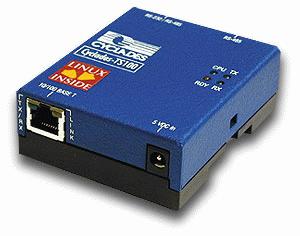
Figure 6. Cyclades TS100
Linksys Wireless Presentation Gateway: Using this embedded Linux-powered device, wireless mobile PC users can project presentations and other data using VGA-equipped devices such as multimedia projectors, monitors and LCD panels without having to physically wire each PC to the projector. The WPG11 lets users take turns controlling the display instantly. Users are each assigned unique key codes for access and control of the device. Because cabling and setup time is eliminated, WiFi-enabled users can take turns controlling the presentation display simply by typing in the pre-assigned key codes. In real time, participants can offer instant visual input that follows the verbal discussion. Perhaps it even solves the inevitable incompatibilities between the laptops and the projectors? (See www.linksys.com.)
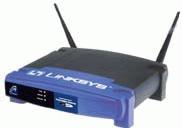
Figure 7. Linksys Wireless Presentation Gateway
Keep abreast of all the latest cool gadgets that have Linux embedded inside by visiting LinuxDevices.com's on-line “Embedded Linux Cool Devices Quick Reference Guide”: www.linuxdevices.com/articles/AT4936596231.html.